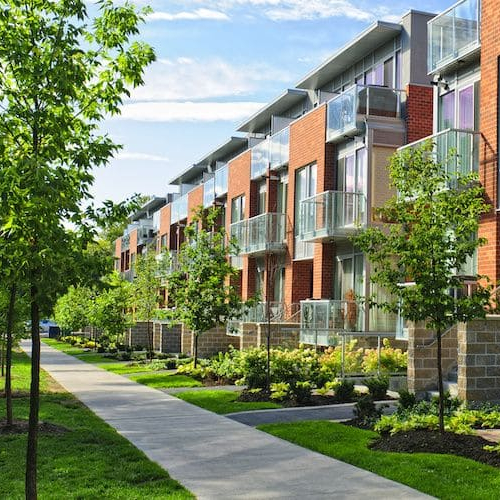History of mortgage assistance programs: 2008 – today
Contributed by Tom McLean
Dec 8, 2025
•6-minute read

Buying a home is an act of optimism – you're usually not thinking about having trouble paying your mortgage. But an unexpected job loss or medical bills can quickly change that point of view. The financial crisis of 2008 was a time when many people faced this problem, and the government provided relief through programs made to assist homeowners in trouble. Fast-forward to 2020, and more relief programs were put in place to respond to the economic impact of the COVID-19 pandemic. While these programs no longer exist, knowing the history of mortgage assistance programs can help you better understand what options you have for help today.
Mortgage relief programs of the past
When the housing market runs into serious trouble, the government has stepped in with programs to help homeowners avoid foreclosure. Here are some recent programs that are no longer operating.
Home Affordable Refinance Program (HARP)
The 2008 financial crisis – known as the Great Recession – began with a collapse in the housing market. As foreclosures increased, home values declined. To counter this, the Federal Reserve cut the federal funds rate range to near zero, which reduced borrowing costs for mortgages.
The problem was that the decline in property values meant that homeowners lacked the equity needed to refinance under traditional requirements. The Home Affordable Refinance Program, or HARP, allowed homeowners to refinance even if they owed more than their home was worth. The program was shuttered in 2016.
Home Affordable Modification Program (HAMP)
The Home Affordable Modification Program, or HAMP, is a loan modification program that ended in 2016. HAMP's goal was to modify home loans so the mortgage payment was no more than 31% of the borrower's gross monthly income. It did so through interest rate reduction, deferment of principal payments above 115% of the home' value, and extension of the loan term to 40 years.
The program was created by the Federal Housing Finance Agency, the regulator for Fannie Mae and Freddie Mac.
Hardest Hit Fund (HHF)
Begun in 2010, the Hardest Hit Fund provided federal funds to the state housing finance agencies hardest hit by the financial crisis. The goal was to help people stay in their primary residences. The last of the funds was distributed by March 2021.
Programs varied by state. Some states offered principal reduction, while others provided forgivable interest-free loans to eligible homeowners.
Principal reduction modification
Beginning in April 2016, principal reduction was available to homeowners who owed more than 115% of their home's worth on their existing mortgage. The principal was forgiven in some cases and deferred to the loan payoff in others.
As many as 33,000 borrowers were expected to be eligible for the program. It was available for about 2% of loans that were underwater when the program was introduced.
This option was available for Fannie Mae or Freddie Mac loans, requiring borrowers to have a conforming conventional loan. Eligible borrowers were to be informed no later than December 2016.
COVID-19 relief
The mortgage relief offered during the COVID-19 pandemic mirrors many of the options available today. The primary difference between pandemic loss-mitigation options and those of today is a lack of credit impact and minimal document requirements during COVID-19.
Today’s mortgage relief
That brings us to the mortgage assistance options that are available today. Neither principal reduction programs nor the relief programs offered during the COVID-19 pandemic exist any longer, but there’s still relief out there. You must qualify for the relief and be approved by your servicer. What’s available might vary with your mortgage investor.
It’s important to note that most mortgage relief options will damage your credit. However, the effects typically aren't as severe or long-lasting as a foreclosure.
An exception to the credit reporting rule is that many servicers, including Rocket Mortgage®, don’t report negative payment information if the relief is offered as part of natural disaster recovery.
Refinancing
Refinancing your home can provide financial relief by lowering your monthly payment or allowing you to borrow equity to consolidate other debts.1 You’ll want to take advantage of this option before you miss any payments because it becomes extremely difficult to qualify with late payments.
There usually are minimum equity requirements for refinancing unless you have an FHA or VA loan and are applying for a Streamline refinance.2,3,4,5
Reinstatement
Reinstatement is paying off your past-due amount in a single lump-sum payment. While this won’t work for everyone, there are instances in which this may be the ideal scenario because your loan is immediately brought current. For example, an employer might come through with back pay that’s been promised.
Before moving forward, be sure to get a reinstatement quote so you know exactly how much is owed.
Repayment plan
Repayment plans spread out the payment of your overdue amount, usually over 3 – 6 months. Enough is added to your regular monthly mortgage payment to ensure the missed payments are repaid.
Forbearance
In a forbearance, your servicer pauses or reduces your monthly mortgage payment for a specific time. It’s intended to give you some breathing room so you can get back on your feet. Paying as much as you can toward your monthly payment will make it easier to pay back when the forbearance ends.
Loan modification
A loan modification changes the terms of your existing loan. This differs from refinancing because it’s not a new loan. This is only offered to people who are struggling with their payments.
A modification usually adds past-due payment to your mortgage balance. During this process, your interest rate will likely change, and the timeline for paying your mortgage may be extended.
Payment deferral or partial claim
Payment deferrals and partial claims have the same effect, even if they work differently. Both partial claim and payment deferral are often confused with forbearance. Payment deferral or partial claim takes past-due payments and makes them due at the loan payoff.
While a payment deferral is a postponement of the past-due payments, a partial claim is attached to the home as a secondary lien. Either way, the payments are due when the loan is paid off.
Traditional home sale
If no path allows you to stay in your home, the next best option is to sell. This has a couple of advantages. First, there is no negative impact on your credit. You’re also able to put any profits toward the down payment or deposit on your next place.
Short sale
A short sale is when your home is sold for less than the amount that you owe because the fair market value isn't enough for the lender to recoup its investment. In this case, your servicer must agree to and approve the final offer related to the short sale.
It’s important to note that your servicer may be able to pursue a deficiency judgment for the difference between what the home sells for and your remaining balance, depending on state law. If they offer to waive this, be sure to get it in writing.
Your servicer also may offer an incentive payment in exchange for your keeping the property in sellable condition until you move out.
Finally, while there is typically a waiting period before getting another mortgage, you may be able to get an FHA loan immediately after the short sale if you meet the following conditions:
- No payments 30 or more days late on installment debt or home loans in the year before the short sale.
- No 30-day late payments on installment debt or mortgages in the 12 months leading to application for the new mortgage.
Deed-in-lieu of foreclosure
A deed-in-lieu of foreclosure is when the owner walks away from your home and signs over the deed to the servicer. The servicer must approve this course of action. It’s important to note that similar waiting periods may apply here as they do to a traditional foreclosure, depending on the loan type.
The short sale guidelines on incentive payments and deficiency waivers apply to deeds-in-lieu as well.
The bottom line: Programs may change, but assistance is out there
Many forms of mortgage assistance that the public is familiar with stem either from the 2008 housing crisis or the economic aftermath of COVID-19. While these programs no longer exist, there are other forms of relief available. If you find yourself struggling with your payment, reach out to your mortgage servicer.
If you’re a Rocket Mortgage® client, you can reach out for help by navigating to the Mortgage tab in your Rocket Account and clicking Help > Payment Assistance.
1 Refinancing may increase finance charges over the life of the loan.
2 The FHA Streamline program may have stricter requirements in some states. In order to qualify for the FHA Streamline program, an immediate 0.5% minimum reduction in interest and mortgage insurance premium is required. Some states may require an appraisal.
3 The VA Streamline program may have stricter requirements in some states. In order to qualify for the VA Streamline program, you must have a VA loan. The VA Streamline is only available on primary residences. Cash-out transactions are not allowed. In order to qualify for a VA Streamline, a 0.5% minimum reduction in interest rate on the previous fixed-rate loan must occur if the new loan will be a fixed rate or a 2% minimum reduction in interest rate on previous adjustable rate mortgage loan must occur; a minimum of 6 months of consecutive mortgage payments must be paid on the current loan at the time of application. Some states may require an appraisal. Additional restrictions/conditions may apply.
4 Rocket Mortgage is not acting on behalf of FHA or HUD.
5 Rocket Mortgage is a VA-approved lender, not endorsed or sponsored by the Dept. of Veterans Affairs or any government agency.
Kevin Graham
Kevin Graham is a Senior Writer for Rocket. He specializes in mortgage qualification, economics and personal finance topics. Kevin has passed the MLO SAFE exam given to mortgage bankers and takes continuing education courses. As someone with cerebral palsy spastic quadriplegia that requires the use of a wheelchair, he also takes on articles around modifying your home for physical challenges and smart home tech. He has a BA in Journalism from Oakland University.
Related resources

8-minute read
The hidden costs of late mortgage payments
Are you worried about the effects of making a late mortgage payment? Learn more about missing a mortgage payment, including how it affects your credit and more.
Read more

9-minute read
Mortgage default: Everything you need to know
Mortgage default can occur if you stop making payments, and it can lead to foreclosure. See how to avoid delinquency and what to do with a mortgage in default.
Read more
7-minute read
The difference between forbearance and foreclosure
The words may sound the same, but there’s a difference between forbearance and foreclosure. Here’s what you need to know.
Read more